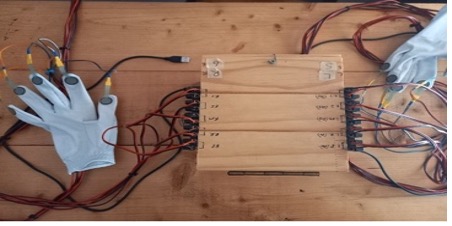Activities of daily living with grasp types and force measurements during object manipulation
DOI:
https://doi.org/10.17159/2310-3833/2024/vol54no1a3Keywords:
human grasp, hand manipulation, hand rehabilitation, activities of daily living, grasp force measurementAbstract
Background:
Limited scientific evidence guides hand rehabilitation towards improved hand function, and safe early return to work. Grasp types, the subunits of object manipulation and the forces which may improve functional outcomes, have been identified as missing links that may inform rehabilitation after second to fifth metacarpal fractures, through progression of basic and instrumental activities of daily living (ADL). The aim of the study was to collect ADL forces through grasp types to inform hand rehabilitation for second to fifth metacarpal fractures.
Methods: This cross-sectional, quantitative study included 32 conveniently sampled healthy adults aged 20 and 59 years. Thirty-one (31) ADLs, both basic and instrumental, each associated with a predominant grasp type, were tested. The participants donned two testing gloves, with force sensing resistors (FSRs) glued to the fingertips, the ADLs were performed, and forces measured. The researcher imported the force data into an Excel spreadsheet for both descriptive and inferential analyses with STATA.
Results: Fourteen males and 18 females, with a mean age of 37 years, participated. Statistically significant differences between genders were found for seven grasp types. Three thumb-adducted power palm grasps, three thumb-abduction precision pad grasps, and one thumb-abduction power palm grasp constituted the testing. Light and heavy ADLs and their associated grasp types were identified.
Conclusion: To ensure optimal hand function, early safe return to ADLs should be the goal of second to fifth metacarpal fracture rehabilitation and may be achieved by incorporating active grasp types as exercises with graded resisted grasp types and ADLs.
Implications for practice
• Occupational therapists can incorporate grasp types in their observation during assessments of individuals who sustained second to fifth metacarpal fractures to determine the subcomponents of functional deficits.
• Hand rehabilitation may be augmented by incorporating grasp types in isolation during unresisted active joint range of motion.
• Occupational therapists, guided by the analysis of hand functioning, can incorporate ADLs with the predominant grasp types which may improve hand function.
• Grasp force data may guide safe and early return to function.
Downloads
References
See PDF for full list of references

Published
Issue
Section
License
Copyright (c) 2024 South African Journal of Occupational Therapy

This work is licensed under a Creative Commons Attribution-NonCommercial-NoDerivatives 4.0 International License.
How to Cite
- Abstract 101
- PLAGIARISM Report 38
- Supplementary File 1 42
- Supplementary File 2 40
- PDF 93
Funding data
-
Fonds Roberto Cimetta
Grant numbers (001 254 8491105 5121105 000000 0000000000 5254) -
University of the Witwatersrand, Johannesburg
Grant numbers (RF2020/08/01).



.png)